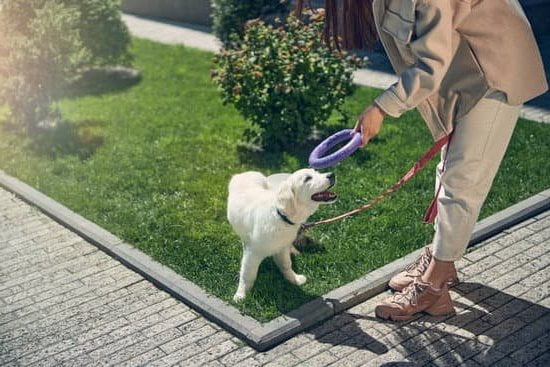For many dog owners, the idea of training their furry friend to like water may seem daunting. However, helping your dog develop a positive association with water can not only be an enjoyable experience for both of you but also crucial for their overall well-being and safety.
Whether it’s taking a dip in the pool or enjoying a day at the beach, water activities offer numerous benefits for dogs, including mental stimulation and physical exercise. In this article, we will explore why it is important for dogs to like water and provide practical tips on how to effectively train your dog to embrace aquatic adventures.
Water activities can have a significant impact on dogs’ overall happiness and health. Swimming, playing in water, or even just splashing around can provide mental stimulation that helps prevent boredom and destructive behavior.
Additionally, these activities offer excellent low-impact exercise that is gentle on your dog’s joints and muscles while building endurance. By training your dog to enjoy water from a young age or gradually introducing them to it if they are apprehensive, you can create lifelong positive experiences for them.
Ensuring your dog’s safety around water bodies is another vital reason to train them to like water. Accidental falls into pools or ponds can happen, and having a dog who feels comfortable in the water greatly reduces the risk of harm or even drowning.
Teaching your dog essential swimming techniques not only gives them confidence but also enhances their ability to navigate through different types of water bodies safely. So let’s dive into understanding your dog’s temperament and preferences when it comes to water activities in order to tailor our training approach accordingly.
Understanding your individual dog’s temperament and personal preferences is key when embarking on this training journey. Just like humans, some dogs naturally gravitate towards water while others may be more hesitant or fearful. Breed predispositions can also play a role in determining a dog’s inclination towards enjoying aquatic activities.
By observing your dog’s behavior and body language around water, you can gain insight into their comfort level. This understanding will help you create a training approach that suits their individual needs. So let’s explore ways to recognize your dog’s temperament and preferences to lay the foundation for successful water training together.
Understanding your dog’s temperament and water preferences
When it comes to training your dog to like water, it is important to understand their temperament and individual preferences. Just like humans, dogs have unique personalities that can influence their comfort level with water activities. Some dogs may naturally be more inclined to enjoy water, while others may have reservations or even fear of it. By understanding your dog’s temperament and preferences, you can tailor your approach to training them effectively.
One key aspect of understanding your dog’s temperament is considering their breed. Different breeds have different tendencies when it comes to liking or disliking water.
For example, breeds like Labrador Retrievers and Golden Retrievers are known for their love of swimming and water activities, while other breeds like Bulldogs or Dachshunds may not be as enthusiastic about water. However, it is important to remember that breed predispositions are not definitive indicators of a dog’s preferences and that individual variation still exists.
To decipher your dog’s comfort level around water, observe their behavior and body language in different situations. Does your dog willingly approach bodies of water on their own? Do they seem eager or hesitant? Observe if they show signs of distress or anxiety when near water, such as trembling or panting excessively. This observation will give you valuable insights into your dog’s natural inclination towards water activities.
Understanding your dog’s temperament and preferences will allow you to create an effective training plan tailored specifically for them. Some dogs may require extra patience and gradual exposure to build their confidence around water, while others may take to it naturally. By being aware of these factors, you can provide the necessary support and guidance to help your dog develop a positive association with water activities.
- Observe your dog’s behavior
- Take note of body language related to anxiety or distress
- Consider breed tendencies as a starting point
Creating positive associations with water
When it comes to training your dog to like water, creating positive associations is crucial. By making the experience safe, enjoyable, and rewarding, you can help your dog develop a positive attitude towards water. Here are some steps you can take to create positive associations with water for your furry friend:
- Step 1: Introduce your dog gradually
- Step 2: Use treats and toys
- Step 3: Gradually increase exposure
- Step 4: Make it fun.
Start by introducing your dog to water in a controlled environment such as a shallow pool or bathtub. Allow them to explore at their own pace and provide plenty of praise and encouragement when they show interest or curiosity. It’s important to avoid rushing and overwhelming them, as this can cause fear or anxiety.
Positive reinforcement is key to creating positive associations. Use treats or toys as rewards during the introduction process. For example, you can place treats near the water or play with their favorite toy near the water’s edge. This will help them associate pleasurable experiences with being around water.
Once your dog is comfortable near shallow water, gradually increase their exposure by moving closer to deeper areas or introducing different types of water environments such as lakes or beaches. Always monitor their comfort level and retreat if they seem anxious or stressed. Remember to reward them for any signs of progress.
Turning water activities into fun experiences will further reinforce positive associations. You can engage in games like fetch in the water, where they have to retrieve a toy from the shallow end of a pool or lake. The joy of play combined with being around water will reinforce their positive emotions towards it.
Remember that every dog is unique, so be patient and give them time to adjust at their own pace. If at any point you notice signs of fear or anxiety, take a step back and reassess the situation. With consistent positive reinforcement and gradual exposure, you can help your dog develop a love for water activities.
By incorporating these techniques into your training routine, you are setting the foundation for a strong and positive relationship between your dog and water.
Starting small
When it comes to training your dog to like water, it’s important to start small and introduce them to water gradually. One effective way to do this is by incorporating water into playtime activities. By making the experience fun and enjoyable, you can help your dog develop a positive association with water.
There are various water-based games and activities that can help your dog become more comfortable around water. Some examples include playing fetch in shallow water, using a sprinkler or hose for interactive play, or setting up a small splash pad for them to explore. The key is to keep the sessions short, stress-free, and filled with positive reinforcement.
During playtime, be sure to observe your dog’s body language and behavior closely. Look for signs of enjoyment such as wagging tails, relaxed posture, or a willingness to interact with the water. If your dog seems hesitant or anxious, take a step back and give them time to adjust at their own pace. It’s important not to force them into any situation that might overwhelm or frighten them.
To further encourage positive associations with water during playtime, you can use treats and rewards. Consider using small, high-value treats that your dog loves as a form of positive reinforcement when they show comfort and enthusiasm around water. Timing is crucial when giving rewards – make sure to immediately reward your dog after they engage in desired behaviors related to the water.
By starting small and introducing water through play, you are helping your dog build confidence and familiarity with this new environment. Remember to always prioritize their safety and well-being during these interactions. With patience and persistence, you can gradually guide your dog towards enjoying larger bodies of water and even swimming.
| Water-Based Games | Benefits |
|---|---|
| Fetching in shallow water | – Introduces your dog to water in a controlled and familiar environment. |
| Playing with a sprinkler or hose | – Provides interactive play while getting your dog gradually accustomed to water. |
| Using a small splash pad | – Allows your dog to explore water in a secure and controlled setting. |
Using treats and rewards during water training
When it comes to training your dog to like water, using treats and rewards can be an effective method to reinforce positive behavior. It is important to remember that dogs respond well to positive reinforcement, and creating a positive association with water can make the training process more enjoyable for both you and your furry friend.
Firstly, it is crucial to choose the right treats for your dog’s water training sessions. Opt for small, high-value treats that your dog finds particularly enticing. These treats should be reserved exclusively for water training to maintain their effectiveness as rewards. By having special treats specifically associated with water activities, you are teaching your dog that being around water leads to something rewarding and delicious.
Timing is also key when using treats as rewards during water training. Be sure to deliver the treat immediately after your dog demonstrates a desired behavior or shows comfort in the water. This helps them establish a clear connection between their actions and the reward they receive. Additionally, while using verbal praises alongside treats can further reinforce positive behavior, it is important to keep in mind that dogs primarily rely on gestures and body language rather than words alone.
| Benefits of Using Treats: |
|---|
| – Reinforces positive behavior |
| – Creates a positive association with water |
| – Helps establish clear connections between actions and rewards |
| – Maintains motivation during training sessions |
In addition to treats, incorporating toys can also be an effective way to reward your dog during water training. Water-friendly toys such as floating balls or chew toys can provide added entertainment and motivation for your dog. By offering a toy as a reward, you are further associating water with fun and playfulness.
Overall, using treats and rewards during water training can help create positive experiences for your dog, making them more likely to enjoy and feel comfortable in water environments. Remember to choose the right treats, time your rewards appropriately, and consider incorporating water-friendly toys to reinforce positive behavior. With patience and consistency, you can help your canine companion develop a lasting love for water activities.
Gradually introducing swimming techniques
Once your dog has become comfortable with being around water and showing positive behavior, it is time to introduce them to swimming techniques. This section will guide you through the process of gradually teaching your dog how to swim, starting with shallow water.
Begin by finding a calm and controlled environment for your dog’s first swimming lesson. This could be a shallow area in a pool, lake, or even a large bathtub. Ensure that the water temperature is warm and comfortable for your furry friend.
To start, lead your dog into the water slowly using a gentle guiding approach. You can place one hand on their chest while providing support under their belly using your other hand. Take small steps forward as they get more comfortable. Remember to keep the experience positive by using treats or verbal praises as rewards for their progress.
As your dog gains confidence and starts paddling their legs, gradually release some of the support you are providing. Allow them to rely more on their own instincts and abilities. It is essential not to rush this process; let them set the pace.
If your dog appears hesitant or anxious during any part of the process, take a step back and provide reassurance. Offer familiar cues they associate with comfort and safety, such as their favorite treats or toys.
If necessary, you can use floatation devices designed specifically for dogs to provide extra support during this learning phase. These devices offer added buoyancy and help build your dog’s confidence while they learn how to maintain balance in the water.
Remember that every dog learns at their own pace, so be patient throughout this process. Gradually increase the distance covered during each training session until your dog becomes proficient at swimming longer distances without needing much assistance from you.
By patiently introducing swimming techniques in a controlled manner, you can help ensure that your dog has a positive experience in the water and develops strong swimming skills over time. Always prioritize safety during these sessions by monitoring your dog closely and being prepared to step in if needed. With consistent training and positive reinforcement, your dog will soon embrace swimming as a fun and enjoyable activity.
Overcoming fear and anxiety associated with water
Addressing Common Fears and Anxieties
Some dogs may naturally have a fear or anxiety when it comes to water. It is important to recognize and understand their fears in order to help them overcome it. Common fears include the sound of running water, large bodies of water, or having their head submerged.
To address these fears, start by introducing your dog to small amounts of water in a controlled environment. This can be as simple as placing a shallow bowl of water on the ground and allowing your dog to approach it at their own pace. Gradually increase the amount of water over time, always observing your dog’s reactions and body language.
Gradual Exposure and Positive Reinforcement
One effective strategy for overcoming fear and anxiety is gradual exposure combined with positive reinforcement. Start by slowly introducing your dog to the sight, smell, and sound of water. This could involve taking walks near bodies of water or playing relaxing sounds associated with water at home.
As your dog becomes more comfortable, gradually progress to different levels of exposure. For example, if your dog is afraid of swimming pools, start by having them stand near the edge while offering treats or praise for calm behavior. Gradually move closer to the pool and eventually allow them to dip their paws in, all while rewarding positive responses.
It is crucial throughout this process to provide plenty of verbal praise, petting, treats or toys when your dog displays calm behavior around water. This positive reinforcement will help associate positive experiences with being around water, ultimately reducing fear and anxiety.
Seeking Professional Help
In some cases where a dog’s fear or anxiety towards water is severe or persistent despite efforts to desensitize them, seeking professional help may be beneficial. Consulting with a veterinarian behaviorist or professional trainer who specializes in fearful dogs can provide valuable guidance tailored specifically for your dog’s needs.
These professionals can not only assess the underlying causes of your dog’s fear or anxiety, but they can also provide specific training techniques and strategies to effectively manage it. They may suggest behavior modification exercises, such as counterconditioning or desensitization protocols, to help your dog overcome their fear in a structured and supportive environment.
Remember that every dog is unique, and overcoming fear and anxiety associated with water will require patience, consistency, and understanding. By following these strategies and seeking professional help when needed, you can help your dog develop a positive relationship with water and enjoy all the benefits that come with it.
Maintaining a positive relationship with water
Regular Water Activities
One of the key ways to maintain a positive relationship with water is to engage in regular water activities with your dog. This could include swimming sessions at the pool or beach, playing with a sprinkler in the backyard, or even incorporating water-based games during playtime. By providing consistent exposure to enjoyable water activities, you can reinforce your dog’s comfort and confidence around water.
Bonding through Water Training
Water training sessions can be an excellent opportunity to bond with your dog while further enhancing their affinity for water. Through exercises like retrieving toys in the water or practicing swimming techniques together, you can strengthen the trust and communication between you and your dog. Make sure these training sessions remain positive, fun, and rewarding for both of you.
Positive Reinforcement
Continue using positive reinforcement techniques during all interactions involving water. Reward your dog’s good behavior in and around the water with treats, toys, or verbal praises. Consistently associating positive experiences with being near or in the water will help solidify their positive relationship with it.
It is important to remember that each dog has its own pace when it comes to developing a positive relationship with water. Some dogs may take longer than others to become comfortable or confident around water bodies.
Remember to always be patient, persistent, and encourage a stress-free environment when working on maintaining this association. With time and effort, you can ensure that your furry friend continues to enjoy the benefits of being in the water while staying safe at all times.
Conclusion
In conclusion, training your dog to like water can be a rewarding and beneficial experience for both you and your furry friend. By gradually introducing water and creating positive associations, you can help your dog overcome any fears or anxieties they may have and build their confidence in water activities. Remember to observe your dog’s temperament and preferences, tailoring the training methods to suit their individual needs.
The benefits of training your dog to enjoy water activities are numerous. Not only does it provide mental stimulation and physical exercise for your canine companion, but it also improves their safety around bodies of water. Whether it’s swimming in a pool or playing at the beach, dogs who are comfortable with water are less likely to panic or get into dangerous situations.
While the journey of training your dog to like water may require patience and persistence, the rewards are well worth it. By using positive reinforcement techniques, gradually introducing different water experiences, and maintaining a supportive environment, you can strengthen the bond between you and your dog while ensuring their enjoyment of water activities for years to come.
So take the plunge, be patient, consistent, and always remember that with love and dedication, almost any dog can learn to love the water.
Frequently Asked Questions
How do you break a dog’s fear of water?
Breaking a dog’s fear of water requires patience, positive reinforcement, and gradual exposure. Start by introducing your dog to small amounts of water, such as a shallow pool or a bathtub with just a few inches of water. Allow your dog to approach at their own pace and observe their reactions closely.
Provide treats, praise, and reassurance when they show signs of calmness or curiosity towards the water. Over time, slowly increase the water level while continuously rewarding positive behavior. Avoid forcing your dog into the water or overwhelming them with too much at once, as this can reinforce their fear instead of helping them overcome it.
How do you introduce a dog to water?
When introducing a dog to water, it is important to create positive associations and make it a pleasant experience for them. Start by choosing a calm and quiet location where your dog feels comfortable. Begin by gently coaxing them towards the water’s edge using treats or toys as incentives.
If your dog hesitates or shows signs of anxiety, don’t force them but instead provide encouragement and rewards for small steps in the right direction. Gradually encourage them to dip their paws into the water while praising and rewarding them for calm behavior. Build up their confidence slowly over several sessions until they are comfortable being in the water.
Why does my dog not like water?
There can be various reasons why a dog may not like water. Some dogs have an inherent fear due to certain experiences or lack of exposure during critical socialization periods as puppies. Other dogs may have had past negative experiences related to water that instilled fear in them.
Additionally, individual personality traits can also influence a dog’s preference or aversion towards certain stimuli such as water. It is crucial to approach these situations with empathy and understanding rather than imposing our expectations on them forcefully. By using positive reinforcement techniques and gradually exposing the dog to water in a patient manner, you might be able to help alleviate their fear over time and build more positive associations with being in or around water.

Welcome to the blog! I am a professional dog trainer and have been working with dogs for many years. In this blog, I will be discussing various topics related to dog training, including tips, tricks, and advice. I hope you find this information helpful and informative. Thanks for reading!





